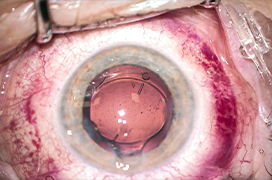Aims: The aim of the study was to retrospectively evaluate changes in vision after the implantation of trifocal (tIOL) or rotationally asymmetric multifocal artificial intraocular lenses (mIOL) in patients undergoing clear lens extraction. The main goal was to determine whether changes to central visual acuity occur after the implantation of an IOL at a follow-up examination after one year. Other objectives were to determine the difference between the groups with implanted diffractive and rotationally asymmetric artificial intraocular lenses, as well as to evaluate the risk of accurate correction in patients who had lived most of their lives "undercorrected".
Material and methods: In our study, we present a retrospective longitudinal evaluation of results in patients after the implantation of an artificial intraocular lens. In the period from 2013 to 2020, we evaluated changes in the vision of 22 patients aged 39–59 years, of whom 18 were women and 5 were men. The average preoperative refraction of amblyopic eyes was +5.7 ±2.13 Dsf and +1.24 ±0.86 Dcyl. In amblyopic eyes, 7 diffractive lenses and 15 rotationally asymmetric lenses were used.
Results: Uncorrected distance visual acuity before surgery and one year (1Y) after was 0.13 ±0.09 vs. 0.57 ±0.28 (p < 0.001); the best corrected distance visual acuity before and 1Y after was 0.53 ±0.22 vs. 0.62 ±0.29 (p = 0.024); uncorrected near visual acuity before and 1Y after was 0.06 ±0.06 vs. 0.48 ±0.32 (p < 0.001); the best corrected near visual acuity before and afér the surgical procedure was 0.45 ±0.27vs. 0.55 ±0.35 (p = 0.014).
Conclusion: Implantation of tIOL and mIOL lenses was effective in our group of patients with amblyopia, thus improving uncorrected distance and near visual acuity and without serious adverse effects. At the same time, we evaluate that the change in refraction and the removal of anisometropia lead to a significant change in the best corrected visual acuity for distance or near vision at the one-year follow-up examination.

